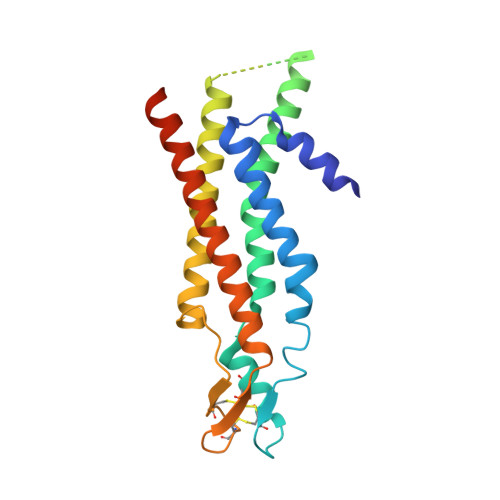Conformational changes and CO 2 -induced channel gating in connexin26.
Brotherton, D.H., Savva, C.G., Ragan, T.J., Dale, N., Cameron, A.D.(2022) Structure 30: 697
- PubMed: 35276081
- DOI: https://doi.org/10.1016/j.str.2022.02.010
- Primary Citation of Related Structures:
7QEO, 7QEQ, 7QER, 7QES, 7QET, 7QEU, 7QEV, 7QEW, 7QEY - PubMed Abstract:
Connexins form large-pore channels that function either as dodecameric gap junctions or hexameric hemichannels to allow the regulated movement of small molecules and ions across cell membranes. Opening or closing of the channels is controlled by a variety of stimuli, and dysregulation leads to multiple diseases. An increase in the partial pressure of carbon dioxide (PCO 2 ) has been shown to cause connexin26 (Cx26) gap junctions to close. Here, we use cryoelectron microscopy (cryo-EM) to determine the structure of human Cx26 gap junctions under increasing levels of PCO 2 . We show a correlation between the level of PCO 2 and the size of the aperture of the pore, governed by the N-terminal helices that line the pore. This indicates that CO 2 alone is sufficient to cause conformational changes in the protein. Analysis of the conformational states shows that movements at the N terminus are linked to both subunit rotation and flexing of the transmembrane helices.
Organizational Affiliation:
School of Life Sciences, University of Warwick, Gibbet Hill Road, CV4 7AL Coventry, UK.
















